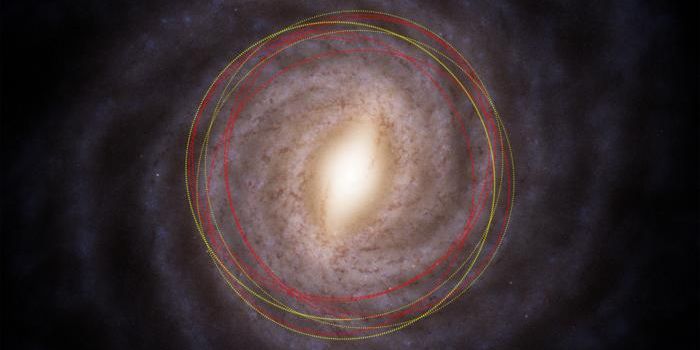Did 1 Billion Comets Form Pluto?
New Horizons flew past Pluto almost three years ago, giving planetary scientists their closest look yet at one of the most fascinating dwarf planets to exist in the entire solar system. Nevertheless, so many questions about the tiny and distant world go unanswered, even today.
Among them is how Pluto formed, and while scientists have proposed a myriad of ideas over the years, that doesn’t keep new theories from rolling off the assembly line. One of the latest to hit the table is the notion that a billion or more comets accumulated into a single, more substantial body over time. The new idea appears in the journal Icarus.
Image Credit: NASA
The dead giveaway, as it seems, was the chemical composition Sputnik Planitia on Pluto’s surface; namely within the left lobe of the light, heart-shaped region that appears in multiple New Horizons photographs.
"We found an intriguing consistency between the estimated amount of nitrogen inside the glacier and the amount that would be expected if Pluto was formed by the agglomeration of roughly a billion comets or other Kuiper Belt objects similar in chemical composition to 67P, the comet explored by Rosetta," explained study lead author Christopher Glein from the Southwest Research Institute (SwRI).
Related: Could Pluto become a planet again?
It’s an intriguing idea given just how much in common Pluto appears to have with comet 67P. And it’s reinforced by the fact that the Kuiper Belt is chock full of icy comet-like objects, known to the scientific community as Kuiper Belt Objects (KBOs).
Then again, the new theory is still just that: a theory. It doesn’t entirely dismiss all other philosophies, nor does it prove itself in its entirety; it’s merely another potential solution to a problem that remains unsolved.
"This research builds upon the fantastic successes of the New Horizons and Rosetta missions to expand our understanding of the origin and evolution of Pluto," Glein added.
"Using chemistry as a detective's tool, we are able to trace certain features we see on Pluto today to formation processes from long ago. This leads to a new appreciation of the richness of Pluto's 'life story,' which we are only starting to grasp."
Related: A planetary haze keeps Pluto colder than expected
Researchers still have a lot more work to do if they want to understand Pluto’s puzzling past fully. Nevertheless, the drive to answer this mind-boggling question motivates experts to keep searching for answers.
Source: Science Alert









